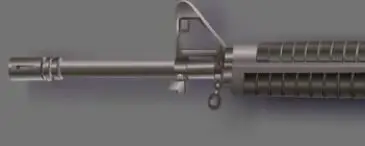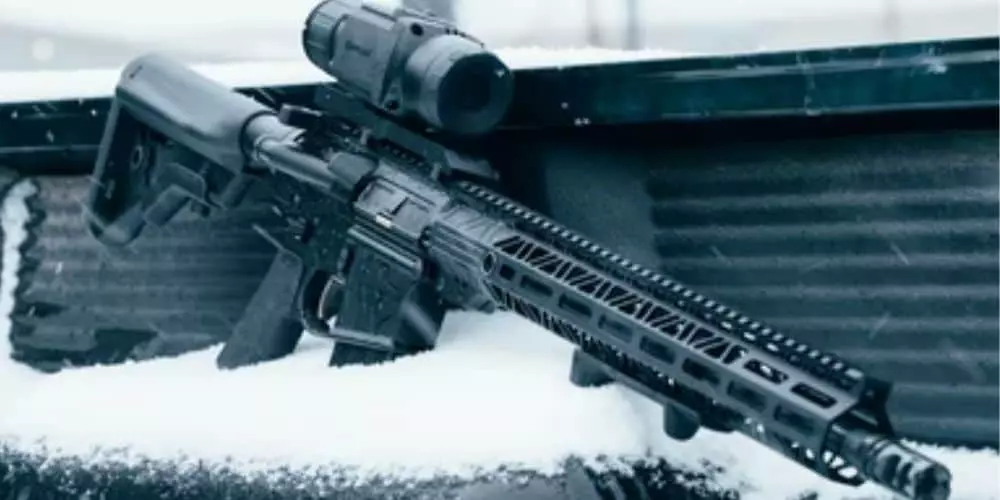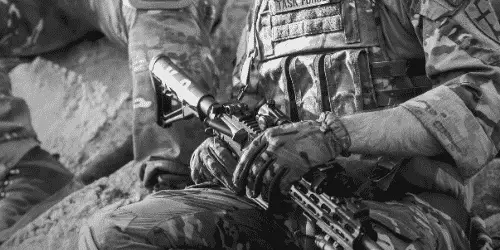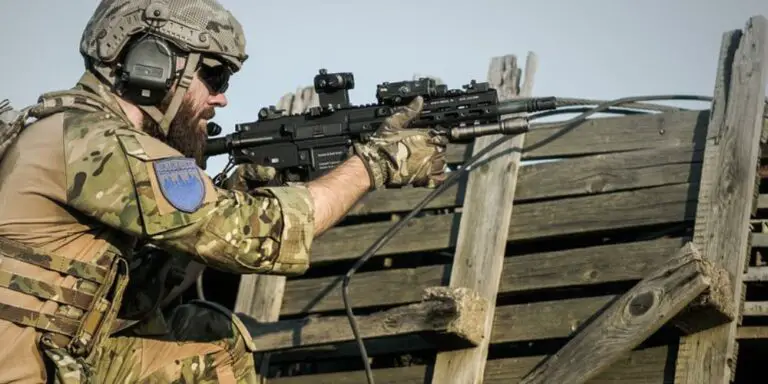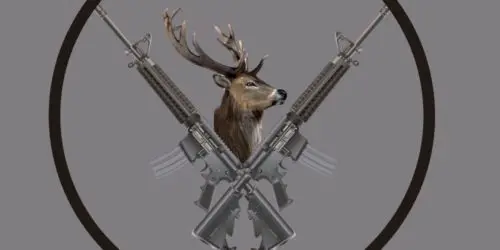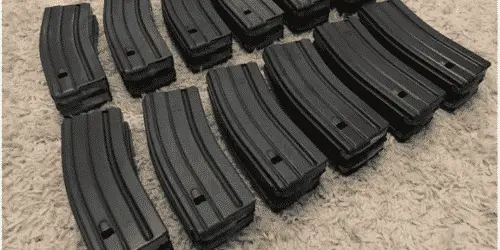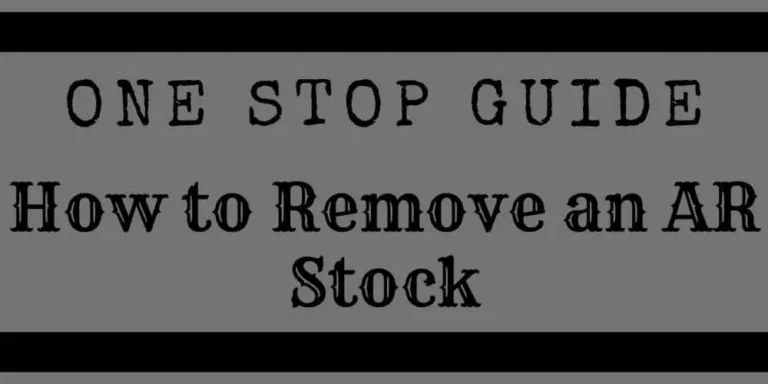3 Reasons Why Rifles Have Long Barrels
When you head down to the gun store or out to the range you can see a variety of guns in many different designs, calibers, sizes and even varying lengths among the same style of guns.
This might have you wondering; if pistols and rifles can be purchased in the same calibers on occasion, why do rifles have long barrels?
Barrel length on rifles in part determines velocity of the round, trajectory and accuracy each in varying degrees. A longer barrel usually results in faster bullet travel, flatter flight path and more accurate shot, though you can reach a point at which a longer barrel results in diminishing results.
Today I am going to discuss how each of these factors are affected by barrel length and why you might want to consider a longer barreled rifle.
Barrel Lengths and Your Rifle
WHile there is no maximum length allowed for your rifle there is a minimum barrel length in most cases. US Law puts a restriction on rifles that have barrels shorter than 16 inches and require special tax stamps along with added regulations for these weapons.
WHile it may seem that a shorter barrel is better in regards to your weapon, let’s look at some of the reasons why you might want a longer barrel on a rifle.
Velocity and Its Relation to a Long Barreled Rifle
In order to understand why a longer rifle barrel increases velocity, it is important to understand the basics behind firing a bullet and what occurs when the powder is ignited.
When you pull the trigger on nearly any firearm a hammer or firing pin strikes the rear of the round igniting the cap which then ignites the powder charge within the cartridge or bullet if you prefer. This results in an explosion from the powder contained within.
You may have encountered fireworks after they have been ignited and the powder within them has exploded. In these cases the packaging is normally destroyed and it’s obvious that this explosion was able to travel in every direction away from its point of origin.
The design of your firearms chamber holds the shell casing of the cartridge in place and keeps the explosion from expanding to the sides or rear of the firearm. This forces the explosion to take the only path it can and that is out of the barrel.
As the explosive forces are expelled out of the chamber and into the barrel they push the bullet which had been sitting at the front of the cartridge and ahead of the “gunpowder” through the barrell and out the far end. Once the bullet has left the barrel these explosive gasses that had been propelling the bullet through the barrel are now free to begin traveling outward and dissipating.
This is where velocity comes into play. Remember that velocity is nothing more than the speed at which the bullet is traveling.
As the gasses are pushing the bullet down the barrel the bullet continues to gain speed, however once it leaves the barrel, it is no longer being pushed due to the dissipation of the propelling gasses.
The longer the barrel the more time that the gasses have to increase the speed of the bullet. A short barrel, such as a pistol would result in relatively slow speeds, even if more gun powder was used.
You can liken this effect to driving an expensive sports car. Even though the car can go 200 miles per hour it cannot reach that speed all at once.
When you stomp the gas the car begins to accelerate, as it travels it will continue to gain speed so long as it is “pushed” by the power of the engine. Though there is a point when the car has reached its max speed and the engine cannot propel it any faster.
The same is true with a bullet. If placed in a ridiculously long barrel and fired, there is a point that the bullet would reach its maximum speed and the propellant would no longer affect it. However, other factors such as the drag of the barrel on the bullet, wind resistance and gravity would all begin to take their toll and slow the bullet down.
The ideal is to then select a barrel length that allows the round to reach its optimal velocity but not so long that it negatively affects the bullet’s travel.
While this “ideal length” for a barrel will vary slightly between cartridges and calibers it is often between 16 and 24 inches depending on the weapon. Some rounds perform better in a barrel even longer than this and some in one slightly shorter.
I should note, though, that rounds can generally be fired from barrels longer or shorter than their optimal lengths just with a somewhat negative effect on their velocity.
Why is Velocity Important in Rifles
The velocity of a bullet will greatly affect your shooting. Higher velocities often result in a flatter trajectory (more on that in a minute), less time to hit the target, and a general increase in accuracy.
How a Long Barrel on a Rifle Affects Trajectory
Trajectory can be described as how flat a bullet travels. This is important because in part it determines where your round will hit based on your aiming location.
You may have noticed the effects of trajectory on your shooting if you have ever been to a range and fired from multiple distances at your target. It is highly likely that unless you were changing your point of aim, your rounds were at slightly various heights on the target. This is due to the rise and fall of bullets as they travel their flight path.
You may not know it but when fired a bullet starts its trajectory on a slightly upward path, once it has traveled for some time, it begins to slow. This coupled with the effects of gravity the bullet will cause it to begin slowly descending in its path of travel.
This is similar to when a football is thrown for an extremely long pass. It is not thrown directly at the intended recipient, but instead thrown upwards in an arching pass that first rises and then descends to the point where it is caught.
This initial rise is due in part to the recoil of your weapon rising slightly when fired and slightly in the design of the weapon. Often manufactures will build this rise into the rifle and sites to help place the bullet on target at a given range. Usually this is somewhere around the 100 yard mark, but as will everything else it varies based on weapon.
By having a barrel that is optimized in length to get the most velocity you have a much flatter trajectory. When the bullet leaves the barrel it is traveling faster, this allows it to travel in a straight line for a further distance.
Back to the football from earlier. If the ball is thrown by a high schooler it is likely that this arch will need to be somewhat higher than a pro who may be strong enough to send the ball much faster in more of a straight line to his receiver.
A flatter trajectory will have the added benefit of making it easier to aim. It is easier to place an accurate shot as with a flat trajectory you no longer have to account for the rise or fall of the bullet depending on the distance to your target. You can aim your shot center of the target and with a flat trajectory it will hit relatively close to that point.
Now into more depth on accuracy.
Longer Barrels on a Rifle, How Accuracy is Improved
After discussing velocity and trajectory it’s easy to see how these two factors can affect accuracy. However, those factors are not the only thing related to rifles having long barrels that affect the accuracy.
Probably the greatest effect on accuracy comes from the effects of a longer barrel on the shooter’s skill.
An excellent marksman has got trigger squeeze, breathing pause and other techniques down to a science. However, for the novice and intermediate shooters a longer barrel provides several benefits.
The first of these has to do with the sights. The distance between the front and rear sight posts can change your accuracy more than you would think. The closer together they are the less accurate the weapon tends to be. This is due to the minute variations in sight picture as well as the possibility that the front sight post will obscure your target.
Here is a simple exercise to demonstrate this. Hole 1 finger up and place it in 12 inches or so in front of your dominant eye. Now focus on a “target” in the distance. Notice how it’s somewhat difficult to see the target and pick out a specific point to aim at.
Now extend your arm out to the full length, raise 1 finger and repeat the process. The distance has caused your finger to appear smaller, I assure you it did not shrink, and let you focus more on a specific sight picture.
This same effect is present when putting some distance between the front and rear sight posts.
The second effect of longer barrels on accuracy has to do with outside factors affecting your shot. This can also be thought of as the amount of force required to move the barrel out of alignment with the target.
Remember I mentioned trigger squeeze a minute ago.
A perfect trigger squeeze involves pulling the trigger directly to the rear with no pressure to either side. This helps to maintain sight alignment.
However, for many new shooters or those excited by the circumstances they often push or pull the trigger slightly to one side or other. This results in lateral, or side to side, movement of the gun barrel affecting their shot.
In these cases, the longer the barrel the more pressure that is required to move the barrel. It is also more of a minute change with a longer barrel. Which in turn causes less of an effect on your bullets’ travel.
The last advantage of a rifle with a long barrel that I am going to discuss here has to do with aiming accuracy. This is essentially that the longer the barrel is the easier it is to line up the shot on the target. A slight deviation off of line is much less noticeable with a long barrel than with a short barrel.
For example if you are using a 12 inch barrel and are off by ¼ inch when you squeeze the trigger your bullet will have a deviation of 5 inches after it has traveled 20 feet. If the same shot is taken with a 24 inch barrel that is off by ¼ inch then deviation would only be 2.5 inches.
While ¼ is a fairly large amount to be off target it is more intended to demonstrate the math behind the longer barrel. These deviations would only increase the further away your target is from you.
You can see this effect for your self if you take three pieces of string. Run the first string from a single point to a “target” located 10 feet away. Measure up the string from the start about 12 inches and again at 24 inches and place marks indicating these spots.
Now take the second string and tie it to the same origination point and run it towards the target. Measure the space where it passes your first mark and make sure they are ¼ apart. Now place a mark where it intersects on your target.
Run the third string in the same manner, this time placing it ¼ away from the mark you placed at 24 inches. You then mark the place where that string lands on your target. You will see this spread that I discussed before. You can adjust these amounts, distances and so forth to see how the effect would be with smaller deviations in your aim, or in the distance to the target.
Regardless it quickly becomes obvious that the longer barrel makes those shots further away easier. Thats why hardly anyone shoots a pistol at targets more than 25 yards away, even that is a far shot for the short barrel on a pistol.
Conclusion: It’s Easy To See Why Rifles Benefit from Longer Barrels
After covering all of these aspects of how a length of barrel affects a rifle’s performance, I hope that you have found the answer to your question, “Why do rifles have long barrels?”. WIth that said here is a reminder;
Rifles are designed for longer ranged shots. This intended use is aided greatly by using a barrel with a longer length. Longer barrels provide higher bullet velocities, a flatter bullet trajectory and a more accurate shot than a short barreled weapon. This is accomplished even in instances where the same bullet and powder charge is used.
If you are interested, here is an article discussing the practical lengths of a rifle firing 5.56 ammo.
